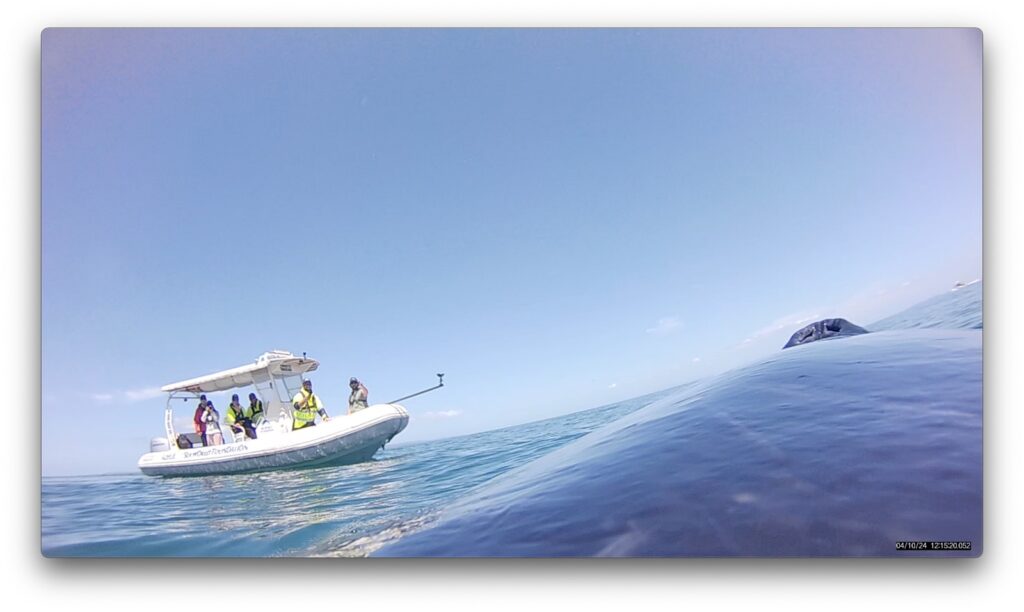A new study led by Griffith University researchers has found that current risk assessments of vessel strikes on large whales, such as migrating humpback whales, may be underestimating the threat of smaller vessels, particularly from recreational vessels, not represented in Automatic Identification Systems (AIS) data.

The study, conducted in Moreton Bay, Australia, highlighted the need for more comprehensive data to protect humpback whales from vessel strikes.
While AIS data has been essential for understanding patterns in marine traffic and assessing vessel-strike risk, it only captures certain classes of vessels, such as commercial shipping vessels and ferry operators.
Recreational vessels, such as small fishing boats, tinnies (aluminium boats), charter boats, sailboats, and yachts, were not legally required to use AIS and therefore presented a significant and largely unaccounted-for risk to whales.
The study found that 93% of recreational vessels in Moreton Bay were not equipped with AIS, meaning their contribution to vessel strike risk was currently underestimated.
"In Moreton Bay, over a 10-year period from 2008 to 2018, 67% of reported vessel strike incidents are from small vessels (<15m) with the remainder from smaller commercial vessels, and so including these smaller, recreational vessels in our assessments gives us a clearer picture of the full scope of vessel strike risk," Australian Research Council Post-doctoral Research Fellow Raphael Mayaud said.
Two study areas were surveyed within the Moreton Bay region – the sheltered waters of the bay between the mainland and Moreton (Mulgumpin) and North Stradbroke (Minjerribah) islands up to the Sunshine Coast; and east from these large sand islands into the offshore waters of the Coral Sea.
The first included many marinas, boat ramps, and mooring grounds that supported recreational boating, whereas the second area was primarily accessible by crossing a coastal bar between Moreton and North Stradbroke islands.
"This study highlights important risk hotspots in Moreton Bay that are currently overlooked, which has significant implications for whale conservation and marine park management, and human safety, as collisions between smaller, recreational vessels with large whales can have catastrophic human life outcomes."
PhD Candidate Raphael Mayaud
The researchers conducted surveys of recreational vessel and humpback whale sightings in the bay, building density surface models to estimate relative vessel-strike risk based on spatial co-occurrence.
The results showed that vessel strike risk varied spatially depending on vessel type (commercial vs. recreational). Larger commercial ships travelling at slow speeds were confined to major port shipping channels and offshore waters with no known whale strikes, whereas recreational vessels travelled at higher speeds and had a broader coverage, posing a threat in key whale habitats, including shallow resting areas and coastal migratory corridors.

The study also supported growing evidence that all vessel types, regardless of size, had the potential to cause whale mortality.
Mayaud said the findings could inform future conservation efforts and marine park management in Moreton Bay, ensuring that mitigation measures, such as seasonal speed limits and targeted monitoring, addressed the full spectrum of vessel traffic.
"By capturing previously unrecorded data, the study enhances our ability to protect vulnerable whale populations, improves human safety by increasing awareness to recreational boaties about their own safety when enjoying these areas, and supports maintenance of the ecological balance within Moreton Bay Marine Park," he said.
Professor Susan Bengtson Nash, project lead, further emphasised the value of this novel dataset in informing the planned review of Moreton Bay Marine Park zoning, as well as industry, and traditional owners within the region.
The study 'The need to consider recreational vessels in risk assessments of vessel strikes to humpback whales (Megaptera novaeangliae)' has been published in Ocean and Coastal Management.







